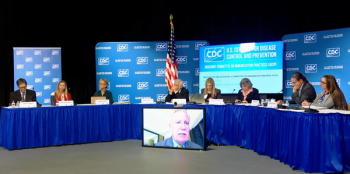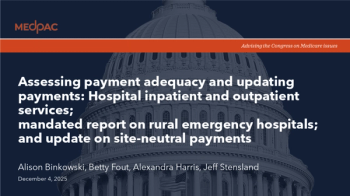
Lung cancer screenings can uncover treatable emphysema in patients
With advances in treatment options, primary care physicians have more good reasons to urge smokers to get screened.
When patients aged 50 years or older have a significant history of smoking, primary care physicians often order lung cancer screenings with low-dose computed tomography (LDCT) scans.
Lung cancer is the
Patients with emphysema have damaged alveoli (air sacs), which results in air trapping inside the lungs. When there is air trapping, the lungs become hyperinflated, the chest may appear fuller or have a barrel-chested appearance, and breathing becomes difficult, causing patients to experience shortness of breath. With fewer alveoli, less oxygen moves into your bloodstream. As a result, physical activity is decreased and there is a deterioration or negative impact on the quality of life. While most cases of COPD/emphysema are diagnosed as a result of symptom-prompting and are found with advanced disease during routine clinical care, research
Advanced treatment options are now available
As
Today, a minimally invasive standard of care option called bronchoscopic lung volume reduction (BLVR) is available to help address this treatment gap for select patients with severe COPD/emphysema.
In the typical BLVR procedure, FDA-
While BLVR treatment is not a cure for the disease, it is an effective intervention method that can help certain patients with severe emphysema regain independence in their daily lives. Many patients report being able to walk longer distances, climb the stairs without extreme breathlessness, and complete everyday tasks — such as shopping or household chores — with greater ease
Complications of the ZephyrEndobronchial Valve treatment can include but are not limited to pneumothorax, worsening of COPD symptoms, hemoptysis, pneumonia, dyspnea and, in rare cases, death.
Valve placement can be economically sustainable
In addition to yielding positive clinical outcomes, new research indicates that BLVR is economically sustainable for organizations that provide interventional pulmonology. A recent analysis from Beth Israel Deaconess Medical Center in Boston evaluated the potential value of the new treatment option and found that a BLVR program can lead to patient referrals for a medical center and is economically viable.
Artificial intelligence-powered detection
So how are eligible patients initially identified? In some cases, clinicians reviewing CT scans may notice some degree of emphysematous destruction, hyperinflation of the lungs or an abnormal shape (flattening) of the diaphragm. New artificial intelligence (AI) tools are also emerging to support early detection by analyzing LDCT scan images and flagging and quantifying radiographic evidence of emphysema.
Integrated platforms can help cross-reference CT findings with other patient data — such as pulmonary function test results, comorbidities and smoking history — to assess whether patients may meet eligibility criteria for additional treatment options, including EBV therapy.
What primary care physicians can do
The next challenge is increasing lung cancer screening participation. In 2020, there were approximately 8.5 million adults eligible for lung cancer screening, yet only 6.5% (about 552,500 people)
“The No. 1 reason people give for not getting a lung cancer screening test is that their health care provider didn’t talk to them about it at all, or didn’t talk to them thoroughly,”
ACS supports a team-based approach to assess eligibility and risk, including educating patient-facing staff to collaborate on the referral process. ACS also mentions the value of coordinated care of eligible patients: “Some of the highest lung cancer screening rates are achieved in settings where the provider can refer the patient to a clinic where
Better reporting leads to better outcomes
Another priority is standardizing radiological reporting for emphysema identified during lung cancer screening. Clear, consistent documentation and communication with both patients and referring providers can help ensure follow-up and appropriate care planning.
Lung cancer screening is inherently valuable, and its benefits increase when other addressable conditions — like emphysema — are identified in the process. With new, minimally invasive treatment options available, physicians and other clinicians can help more patients access the care they need by encouraging screening, initiating conversations, and building pathways for timely diagnosis and intervention.
See important safety information
Narinder Singh Shargill, PhD, is vice president of global medical affairs at
Newsletter
Stay informed and empowered with Medical Economics enewsletter, delivering expert insights, financial strategies, practice management tips and technology trends — tailored for today’s physicians.
















